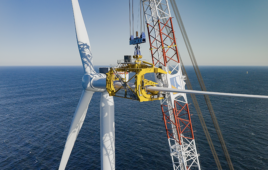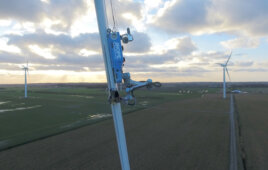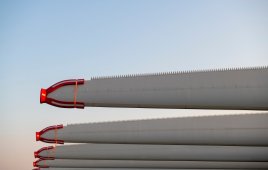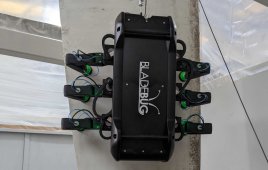Power generation from renewable sources is a key part of Covestro’s sustainability concept, says the company. This applies above all to wind power, which is one of the most promising renewable energy sources due to its global availability and the technical progress already made. Polymer manufacturer Covestro (formerly Bayer MaterialScience) focuses on the production of high-tech polymer materials and the development of solutions for products used in many areas of daily life.
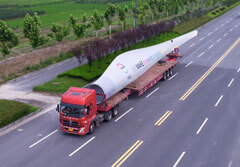
In collaboration with partners, Covestro recently created the first ever large polyurethane rotor blade in China. It is 37.5-meters long and dimensioned for an output of 1.5 MW. This is important evidence that the resin is suitable for industrial production
Wind power capacity is seeing double-digit annual growth across the globe. Cost-efficient processes for manufacturing wind turbines are in greater demand than ever to enable further expansion. Once in operation, the aim is for turbines to be used over a lengthy period with the lowest possible maintenance requirements. This is particularly true of offshore turbines, some of which are exposed to extreme environmental conditions.
Global expertise
Covestro’s innovative and sustainable material solutions improve the efficiency of wind turbine manufacture and support the creation of further onshore and offshore wind farms with a long service life.
The company has its own competence center in Otterup, Denmark, to coordinate its global wind energy activities. “Our aim is to use creative and sometimes unexpected solutions to make the world a brighter place – and power generation is part of this,” said Kim Klausen, who is in charge of Covestro’s global wind energy program.
Covestro will be showcasing its latest developments at the K 2016 plastics trade fair. One example is a special infusion resin for the cost-efficient manufacture of rotor blades. When used with reinforcing glass fibers and an efficient production process, this resin enables short cycle times. “This is a clear cost advantage for manufacturers,” said Klausen. “After all, rotor blades account for around a quarter of the total cost of new wind turbines.” The resin also exhibits very good mechanical properties.

Covestro has developed a cost- and time-efficient solution for the coating of steel towers and rotor blades. With Pasquick technology; the number of coats can be reduced compared with the conventional process. What’s more; the coatings cure faster.
The half-shells for the rotor blades are efficiently manufactured using the vacuum infusion process. This involves placing the core materials and glass fiber fabrics in a mold and sealing the structure hermetically with a film. Once the vacuum has been created, introducing the liquid resin starts the infusion process. A version of the process optimized for polyurethane resins was developed by HÜBERS in collaboration with Covestro.
Short cycle times
Thanks to the vacuum, the process only requires a relatively short amount of time and prevents the formation of cavities. The advantage that polyurethane resin has over epoxy resins is that it flows more easily and ensures better wetting of the glass fibers used for reinforcement. The curing process starts when the mold is heated and is faster than when using epoxy resins.
Covestro recently created the first ever large polyurethane rotor blade in China. It was manufactured at the Shanghai FRP Research Institute in collaboration with HÜBERS and glass fabric manufacturer Chongqing Polycomp. International Corp. (CPIC). The blade is 37.5-meters long and dimensioned for an output of 1.5 MW. This provides important evidence that the resin is suitable for industrial production. In collaboration with industry partners such as glass fabric supplier Saertex, Covestro is planning to produce further prototypes.
Economic significance
The company has also developed a cost and time-efficient solution for coating steel towers and rotor blades. With Pasquick technology, the number of coats can be reduced compared with the conventional process. What’s more, the coatings cure faster. Both factors help to further reduce the cycle time and the manufacturing costs of wind turbines.
The corrosion protection is just as long-lasting and high in quality as with the standard process. This is an important prerequisite for turbines with long service lives and minimal maintenance requirements and thus for the cost-effective use of wind energy.
The same applies to the rotor blades: During a windstorm, even raindrops can act like bullets at a height of 90 meters – especially at the tips of rotor blades. And offshore turbines face the added problem of saltwater. Polyaspartic coatings offer perfect protection here as well. The low-solvent coatings also set standards when it comes to sustainability. The company says leading manufacturers of wind turbines therefore have already embraced the Pasquick technology.
Durable cable protection
Maintenance at sea can be associated with huge costs, especially for operators of offshore wind farms. Subsea cables that are permanently exposed to strong currents are particularly susceptible to damage. Covestro elastomers based on the Baytec and Desmodur polyurethane systems are ideal for protecting cables and have long been used for this purpose. The protective systems benefit from excellent impact strength and decomposition resistance. Unlike steel and concrete, components require no further processing, which saves a significant amount of time and money when building offshore wind farms.
Tekmar Energy Ltd. is one company that recognizes these benefits. The European manufacturer of subsea cables is making exclusive use of Covestro’s products for the construction of offshore wind farms in China. The two companies recently signed a collaboration agreement to address the increasing demand in the Chinese market.
Meet the company at the K 2016 plastics trade fair from October 19 to 26 in Düsseldorf, Germany, Hall 6, Stand A 75. For more: at http://www.k2016.covestro.com/.
Filed Under: Blades

